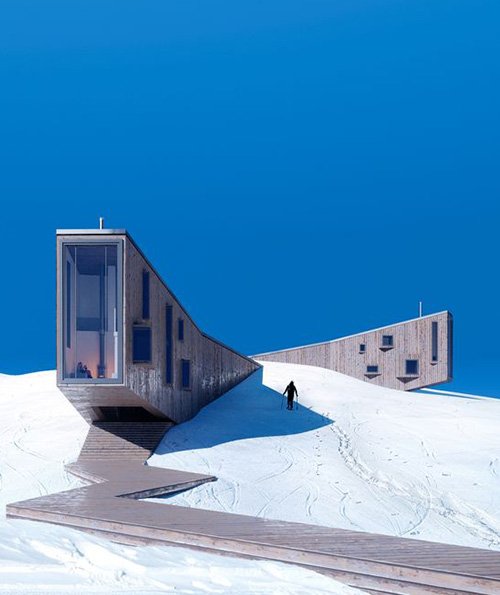
In the rarefied air of high-altitude living, where the atmosphere is crisp and panoramic vistas unfold at every turn, the architectural endeavour takes on a unique set of challenges. This exploration, aptly titled ‘Elegance in Elevation,’ embarks on a journey through the distinctive complexities that high-altitude environments present. We delve into the historical echoes and contemporary intricacies of crafting homes that not only embrace the serenity of lofty landscapes but also triumph over the design hurdles inherent to elevated living.

Historical Perspective:
High-altitude living has been etched into the annals of human history, witnessed in the ancient cliffside villages and monasteries that dared to kiss the sky. Beyond serving as mere shelters, these structures embodied a harmonious integration with their surroundings, reflecting an intuitive understanding of the challenges posed by altitude. From the cliffside dwellings of the Anasazi people to the tranquil monasteries of the Himalayas, historical architecture in high-altitude regions bears witness to a profound respect for nature and a symbiotic relationship with the elements.

Contemporary Design Challenges:
Environmental Extremes:
Elegance in Elevation grapples with the distinctive challenges presented by the extremes of high-altitude environments. Intense sunlight, temperature fluctuations, and robust winds demand an architectural response that shields inhabitants while embracing the beauty of these natural elements. Crafting homes that act as buffers against harsh weather while seamlessly connecting with the surrounding landscape encapsulates the delicate equilibrium that defines high-altitude architecture.

Altitude-Induced Constraints:
The thin air at high altitudes introduces physiological challenges that architects must address. Reduced oxygen levels can impact human comfort and health, necessitating meticulous consideration in the design process. Ventilation systems, interior layouts, and material choices must align with the unique needs of residents dwelling in these elevated landscapes.

Structural Stability:
Building at high altitudes demands structures that withstand not only the natural forces of wind and weather but also potential geological events like avalanches or landslides. Architects must tread the fine line between creating homes that are structurally sound and seamlessly integrating with the natural contours of mountainous terrain, harmonizing man-made structures with the earth’s rugged topography.

Energy Efficiency:
The remoteness associated with high-altitude living makes energy efficiency a paramount concern. Elegance in Elevation calls for sustainable design principles, from passive solar heating to innovative insulation methods, essential in crafting homes that not only tread lightly on the environment but also provide a comfortable and energy-efficient living space for their inhabitants.

Contemporary Applications:
Integration with Nature:
Contemporary high-altitude homes seek not only to coexist with nature but to become a seamless extension of it. Large windows, open floor plans, and materials that blend with the natural surroundings create homes that celebrate the panoramic beauty of mountain landscapes. The architecture strives to frame the ever-changing tableau of mountains, valleys, and skies as an ever-present work of art, blurring the lines between indoors and outdoors.

Technology and Innovation:
In the 21st century, technology has become a crucial ally in overcoming the challenges of high-altitude living. Innovations in materials, building techniques, and smart home technology contribute to creating homes that are not only resilient to environmental extremes but also provide a high degree of comfort and convenience for their occupants. Technological advancements have become the modern tools for harmonizing human habitation with the formidable elements of high-altitude environments.

Community Living:
High-altitude communities often foster a sense of camaraderie born out of shared challenges and a deep appreciation for the unique lifestyle. The architectural design extends beyond individual homes to create communal spaces that facilitate social interactions, shared resources, and a collective ethos of sustainability. The sense of community becomes an integral part of Elegance in Elevation, fostering relationships and resilience in the face of the challenges presented by high-altitude living.

Preservation of Cultural Heritage:
Many high-altitude regions are home to indigenous cultures with rich traditions and histories. Contemporary architects engaged in designing homes in these areas collaborate with local communities to preserve and integrate cultural elements into the architecture. Elegance in Elevation, in this context, involves a delicate dance between modernity and tradition, creating homes that honour the past while embracing the future and ensuring the continuity of cultural heritage in the lofty abodes.

Elegance in Elevation encapsulates not only the unique challenges posed by high-altitude living but also the artistry and ingenuity required to overcome them. From historical perspectives drawing on the wisdom of ancient mountain dwellers to contemporary applications harnessing cutting-edge technology, the architecture of high-altitude homes represents a fusion of resilience, sustainability, and a deep respect for the natural world.
In these lofty abodes, the boundaries between shelter and nature blur, creating spaces that invite inhabitants to live in harmony with their sublime surroundings. Elegance in Elevation becomes a poetic ode to the marriage of architectural design and the untamed beauty of high-altitude landscapes—a harmonious synthesis that transforms challenges into opportunities and elevates the act of dwelling into an art form.

